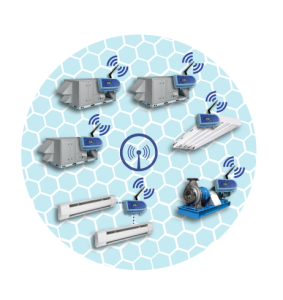 Throughout 2012, EDF’s Energy Innovation Series will highlight around 20 innovations across a broad range of energy categories, including smart grid and renewable energy technologies, energy efficiency financing, and progressive utilities, to name a few. This series will demonstrate that cost-effective, clean energy solutions are available now and imperative to lowering our dependence on fossil fuels.
Throughout 2012, EDF’s Energy Innovation Series will highlight around 20 innovations across a broad range of energy categories, including smart grid and renewable energy technologies, energy efficiency financing, and progressive utilities, to name a few. This series will demonstrate that cost-effective, clean energy solutions are available now and imperative to lowering our dependence on fossil fuels.
For more information on this featured innovation, please view this video on REGEN Energy’s innovation here.
Mark Kerbel would like the world to think of every building as a giant beehive. In these bustling hubs of activity, each electrical device not only takes care of its individual tasks, but it is also aware of what the other devices are doing. They are part of a team and work together to minimize work and strengthen the “hive.”
Kerbel is co-founder of Toronto-based company REGEN Energy (REGEN). For REGEN, which makes wireless controllers that monitor and manage equipment with high power needs like heating and cooling, or “HVAC” systems, the beehive isn’t simply a sales pitch metaphor. Swarm theory is the company’s foundation.
For the last century, our outdated electric grid has generally worked the same way: energy is generated in a remote location and pushed to homes and businesses, where humans make most of the decisions about what switches are turned on and off. Demand management – like REGEN’s energy load management methodology – brings intelligent decision making into the process, which allows for more efficient use of energy, and helps reduce stress to the electric grid during peak times of energy demand by lessening consumer energy consumption.

Credit: REGEN Energy
“We think the natural world has a lot to teach us about efficiency,” said Kerbel. “And bees and other swarming animals are among nature’s best examples of teamwork and efficiency. Our technology injects swarm theory into a grid that has historically been simple and manual, and makes it intelligent and automatic.”
And much, much more efficient.
REGEN’s Swarm Energy Management technology employs a node at each electrical load in a building. For example, a large corporate campus might install a REGEN node on each HVAC unit. Using REGEN’s patented algorithms (which the company calls “swarm logic”), the nodes communicate with each other wirelessly and are able to balance the attached loads to smooth out the overall demand of a building. In a simple scenario, one HVAC unit might detect that another on a different part of a building will turn off in two minutes, and delay just long enough to avoid adding that extra load. But REGEN’s system can also handle more complex scenarios that consider dozens of nodes that control various types of loads.
All of this, REGEN states, can add up to a peak electrical demand reduction of 30 percent for commercial and industrial properties.
In the energy efficiency industry, things that save small amounts of energy are fairly simple and inexpensive. But improvements that reduce energy use as much as REGEN’s system are often cost prohibitive on the front end. REGEN promises quick energy reduction with a small up-front expense. And, because the parts of the system communicate wirelessly, it doesn’t require advanced metering or utility-side grid investments. It can work today, in many markets.
“The beauty of our system is that it is simultaneously elegant and simple,” Kerbel said. “It is very easy to install — one node per device you want to manage, and they communicate with each other. It doesn’t require any intervention from a customer’s IT department. So it’s easy to get online quickly and manage your loads without a massive retrofit or capital expense.”

Credit: REGEN Energy
In two early deployments in the U.S. — a big box retailer and a movie theatre chain — REGEN’s system resulted in enough energy savings to recoup the system’s cost in one to two years.
As the consumer electronic world evolves, we expect electrical devices to have this kind of awareness and intelligence. But heating and cooling represent such a large proportion of peak demand that it’s a logical, helpful and profitable place to start. And, because the payback period is so short, this is a great investment for schools, large corporate campuses and other multi-building sites that have intensive energy needs.
 It’s not often that a new regulatory idea becomes so popular that one or more states per month climb on the bandwagon. But that is precisely what has happened with the push to disclose which chemicals are pumped into the ground to stimulate oil and natural gas production during the process known as hydraulic fracturing, or “fracking.”
It’s not often that a new regulatory idea becomes so popular that one or more states per month climb on the bandwagon. But that is precisely what has happened with the push to disclose which chemicals are pumped into the ground to stimulate oil and natural gas production during the process known as hydraulic fracturing, or “fracking.”















